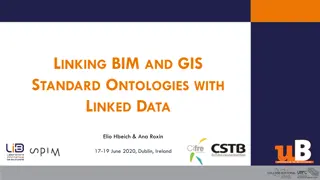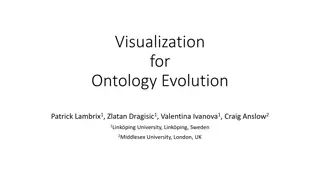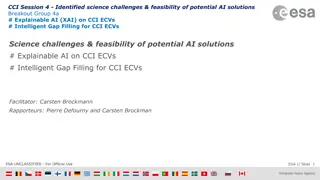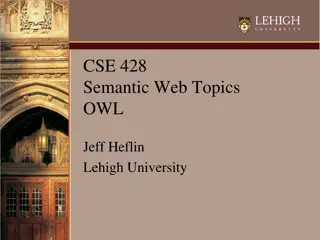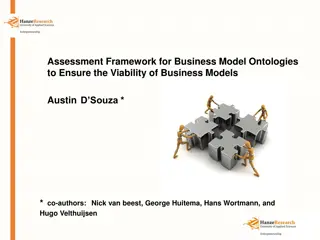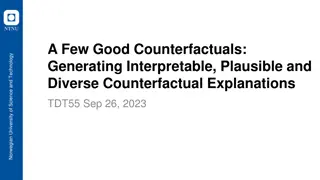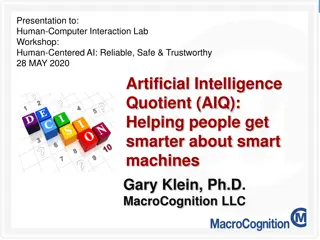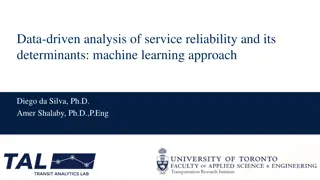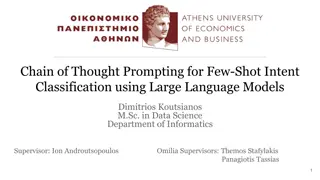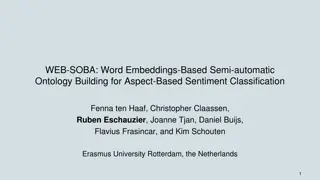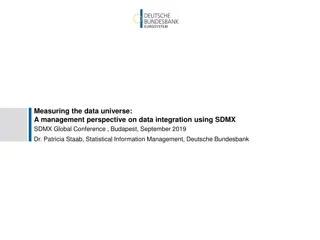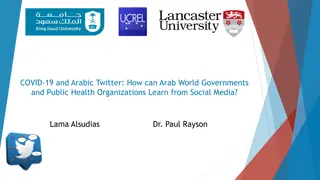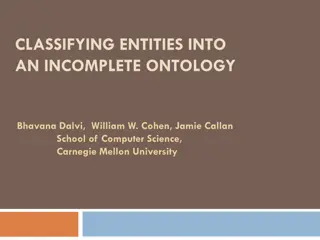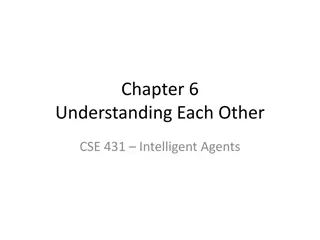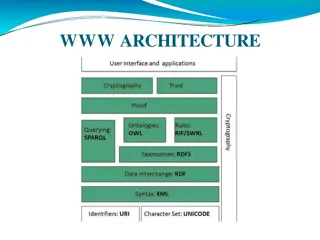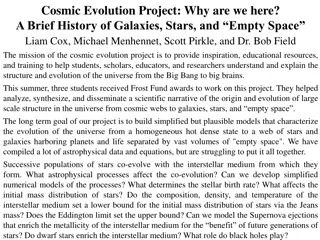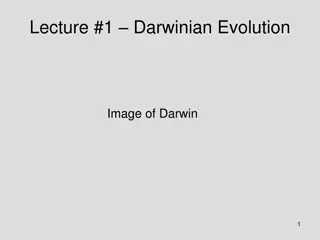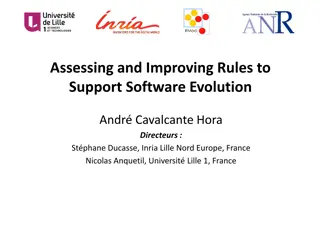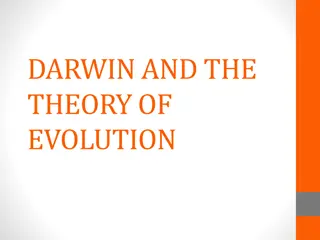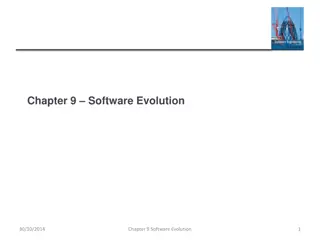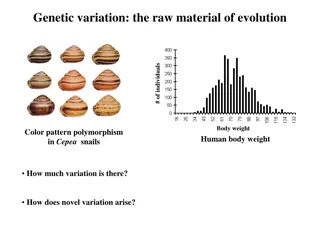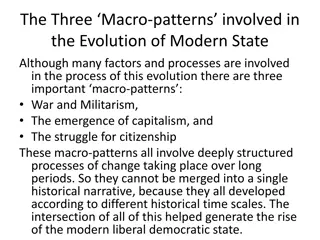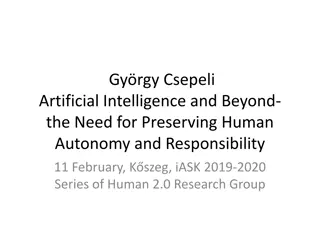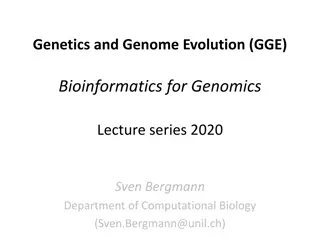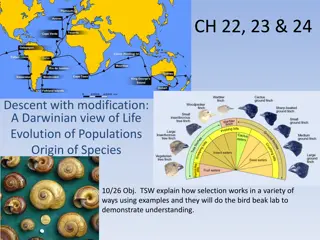Evolution of AI and the Role of Ontologies in Explainable AI
The Evolution of AI from prehistory to the modern era, exploring key milestones in the development of Artificial Intelligence. It covers the transition from early Neural Networks to the current focus on Explainable AI, highlighting DARPA's XAI program and techniques for achieving a balance between performance and explainability in machine learning models. Recent studies emphasize the importance of explainability in AI systems through examples of XAI and Ontology applications.
Download Presentation

Please find below an Image/Link to download the presentation.
The content on the website is provided AS IS for your information and personal use only. It may not be sold, licensed, or shared on other websites without obtaining consent from the author. Download presentation by click this link. If you encounter any issues during the download, it is possible that the publisher has removed the file from their server.
E N D
Presentation Transcript
Ontology Summit 2019: Role of Ontologies in Explaining Reasoning An Overview of Explainable AI An Overview of Explainable AI Co-Champions Ravi Sharma Ram D. Sriram (NIST) 2018-11-28
Evolution of AI Prehistory (Paleolithic: Indian and Greek Philosophies; Neolithic: Hume, Russell, Turing) The Beginning (1956: AI coined at Dartmouth Conference) Early years (1957 1980: GPS, Dendral, Hearsay, Macsyma, Mycin, Shrdlu, Shakey, etc.) Knowledge is power & Early Neural Networks (1980 -- 1990: The first wave) The Silent Period (1990 2000: Deep Blue, Rise of Robots, Commercialization of AI technologies, e.g., Speech Recognition) Neural Networks to the Fore (2000 2015: The second wave: Deep Learning) Symbiosis of Neural and Knowledge Networks (2015 2025: Explainable AI, OKN, etc. The third wave) The Conscious Machine (2025 -- ?? -- The fourth wave: Tsunami)
AI, ML and DL Ontology Summit 2019 3
Performance vs.Explainability: DARPA XAI Program Learning Techniques (today) Explainability (notional) NeuralNets LearningPerformance Graphical Models Deep Learning Ensemble Methods Bayesian BeliefNets Random Forests SRL CRFs HBNs AOGs Statistical Models MLNs Decision Trees Markov Models Explainability SVMs Courtesy: David Gunning, DARPA
Performance vs.Explainability: DARPA XAI Program Learning Techniques (today) XAI Explainability (notional) Approach NeuralNets LearningPerformance Graphical Models Create a suite of machine learning techniques that produce more explainablemodels, while maintaining a high level of learning performance Deep Learning Ensemble Methods Bayesian BeliefNets Random Forests SRL CRFs HBNs AOGs Statistical Models MLNs Decision Trees Markov Models Explainability SVMs Interpretable Models Techniques to learnmore structured, interpretable, causal models Deep Explanation Modified deeplearning techniques to learn explainable features Model Induction Techniques to infer an explainable model from any model as a black box Courtesy: David Gunning, DARPA
Recent Studies Examples: XAI and Ontology Current Advances, Trends and Challenges of Machine Learning and Knowledge Extraction: From Machine Learning to Explainable AI, IFIP International Federation for Information Processing 2018, A. Holzinger et. al., https://doi.org/10.1007/978-3-319-99740-7_1. For the future, we envision a fruitful marriage between classic logical approaches (ontologies) with statistical approaches which may lead to context- adaptive systems (stochastic ontologies) that might work similar as the human brain. See Image From Machine Learning to Explainable AI, Andreas Holzinger, Published in: 2018 World Symposium on Digital Intelligence for Systems and Machines (DISA) Maybe one step further is in linking probabilistic learning methods with large knowledge representations (ontologies) and logical approaches, thus making results re-traceable, explainable and comprehensible on demand. Ontology Summit 2019 6
Agenda Derek Doran, Wright State University, will provide an overview of explainable AI (XAI). Derek Doran is an Associate Professor of Computer Science and Engineering at Wright State University. His research interests are in developing statistical, deep learning and topological data analysis (TDA) methods for the study of complex web and cyber-systems. In the coming virtual sessions (Feb. 20 and April 3, 2019), we will have have a more in-depth discussion on the role of ontologies in realizing XAI.




